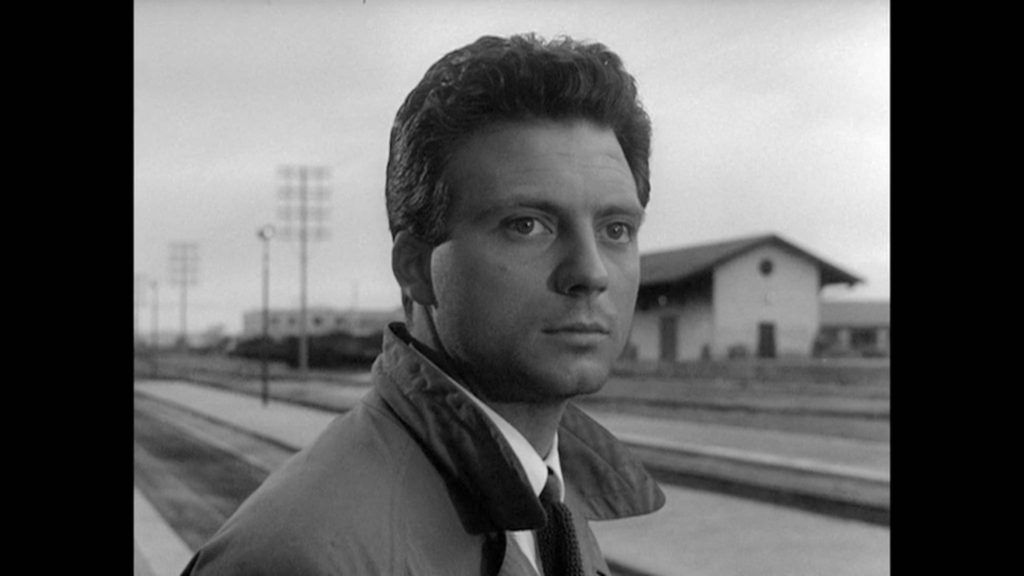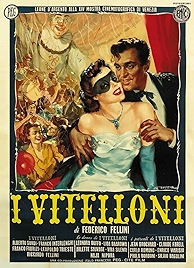Federico Fellini’s 1953 breakthrough I Vitelloni is often translated as The Bullocks. The Young Bucks would be better, since it’s the story of a group of young Italian guys – all of them pretty good looking, all of them with a high opinion of themselves – who do very little with their time apart from drink, smoke, play billiards, bet on the horses, chase women and, coming way down the list, occasionally wonder what the future might bring.
Scratch that. It’s actually really the story of one of the group, Fausto (Franco Fabrizi), a handsome devil in the Richard Burton mould who, as the film starts, is trying to skip town, having impregnated the sister of one of his friends. Sandra (Leonora Ruffo), ironically, has just been crowned Miss Mermaid 1953 in a local beauty pageant, but she’s about to taste renown of a different sort.
This being 1950s Italy, Catholic and conservative, Fausto has soon been bullied to the altar and he and Sandra are soon living as man and wife at her parents’ house. In the sort of plot that would later drive many a British kitchen sinker, Fausto’s wings are now clipped, or they should be.
In fact he carries on much as before, making eyes at pretty women, even when out at the cinema with his wife, until he eventually makes a move on his boss’s wife Giulia (played by Lída Baarová, who had once been the mistress of Josef Goebbels, but that’s another story), gets fired and precipitates a crisis that forces him to take a long hard look at himself.
This might be Fausto’s story but the shooting of the film was organised around the most famous actor in the produciton, Alberto Sordi, and followed him around Italy as he fulfilled a series of stage commitments. Fellini shot on the hoof, as and when, using whichever of three cinematographers could make it to wherever Sordi was on any particular date. Hence the names Carlo Carlini, Otello Martelli and Luciano Trasatti all down as cameramen, though between the three of them and Fellini, they manage to cobble together a unified visual style of languid tracking shots, a heightened, documentary-style neo-realism with theatrical elements and hints of what would later be Fellini’s high style – his fascination with grotesques, cross-dressing and people in uniform.
The glimpses of the later style are most notable in a massive party sequence set in a ballroom that’s a blizzard of streamers and glitter, masks and dancers. So this is where Paolo Sorrentino got the idea for that amazing opening set piece set at a party in his superb The Great Beauty.
The other guys barely figure. Moraldo (Franco Interlenghi) is often held to be the avatar for Fellini himself, though with hints of a sexual fascination with a teenage boy Moraldo meets on the empty streets one night, this might be up for reconsideration (since Fellini didn’t swing that way). Moraldo is the one who longs to go to Rome, to get out of this provincial backwater, to stand on his own two feet and make something of himself. And it’s his voiceover that introduces us to the film’s characters and fleshes out the narrative. But Fellini might be playing about here. It’s based on his life but that doesn’t mean necessarily that Moraldo is Fellini. Leopoldo (Leopoldo Trieste), the budding writer, would be a more obvious Fellini stand-in. As would Fellini’s own brother, Riccardo Fellini, who plays Riccardo, the least well defined of the group.
Nostalgia-tinged, light-hearted soap opera is the prevailing atmosphere, with Fellini indulging in a couple of accelerated dolly shots right into people’s faces at moments of high anxiety, in much the same way that Brazilian soap would later take to an extreme and the whole world would parody. Soap opera in which every scene is beautifully composed and photographed, and every actor’s every move seems to be choreographed.
The film won Fellini an Oscar nomination. Coming after the flop of his previous film, The White Sheik, this was an achievement. Fellini would follow up the next year with La Strada, which is where his remarkable 20-odd year run really begins. In I Vitelloni he’s gathering his forces for the push.
I Vitelloni – Watch it/buy it at Amazon
I am an Amazon affiliate
© Steve Morrissey 2022


